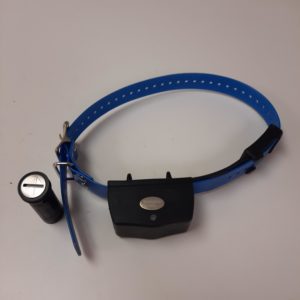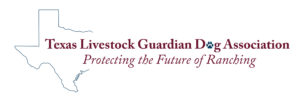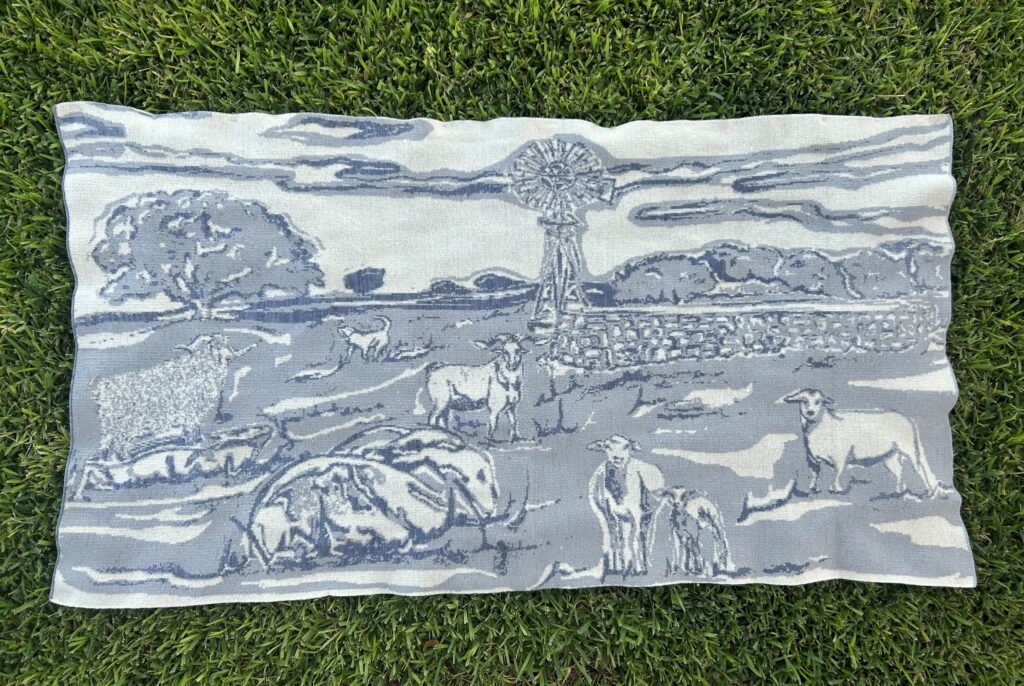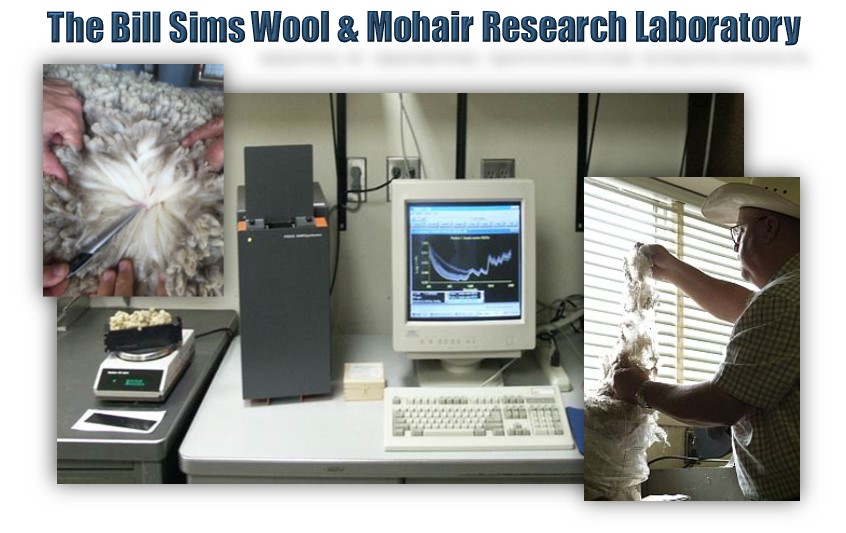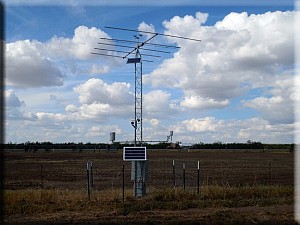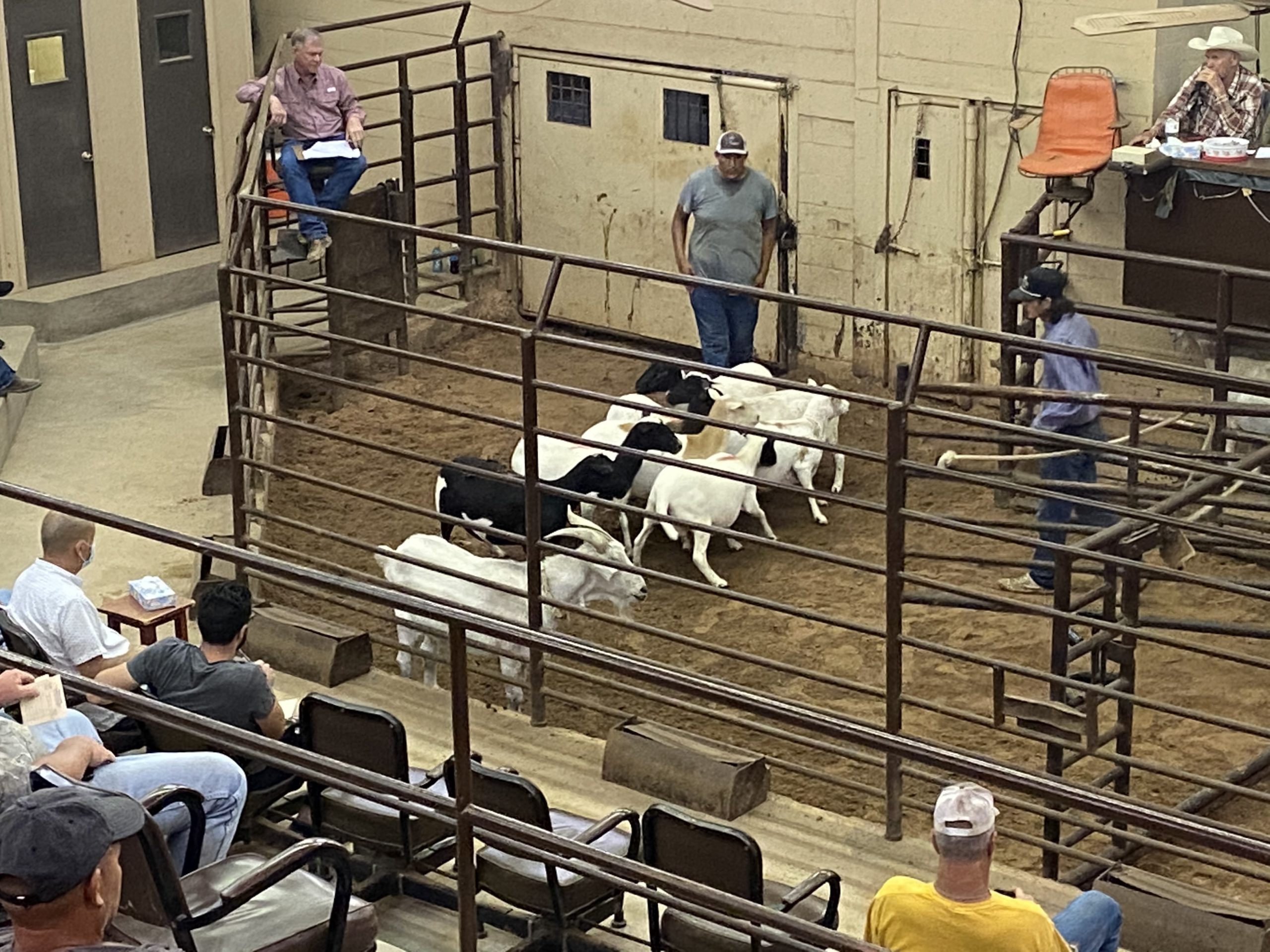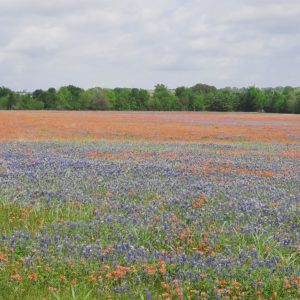
Pasture of blue bonnets and Indian paintbrush flowers in Washington County, TX. (Texas A&M AgriLife photo courtesy Costanzo 2022)
April showers in some parts of Texas helped the beautiful blue bonnets and Indian paintbrush flowers bloom! While the area south of San Angelo got a good soaking the last week of April, San Angelo did not receive as much. We are still anxiously awaiting a good storm at the Center so we can stop buying livestock feed, other than dog food.
AgriLife Livestock Guardian Dog Program Events and Update
We held our second LGD question and answer session on Facebook in early April. It was great to see more producers join in live this time and post questions they needed answers to. Our next Facebook Live LGD Q&A session will be held on June 9th at 3pm. Place your questions in the comment section of the advertising post for the event and we will do our best to answer them during a Facebook Live video. The questions with the most likes/loves will be answered during the live session so make sure you vote! Registration is not required for the live event. Check out our Facebook page or the AgriLife Center – San Angelo website for more information.
The next webinar in the LGD series will be held on November 17, 2022, at 3pm so make sure to save the date on your calendar! Dr. Catherine Lord will be discussing bonding and socialization development in puppies and dogs. She is a postdoctoral associate in the Karlsson Lab at The University of Massachusetts Chan Medical School and a former student of LGD researcher Dr. Raymond Coppinger. I hope you can join us live for this event. Check our Facebook page for more information or the AgriLife Center – San Angelo website to register for the event.
We have LoRa GPS tracking systems installed at both the Read Ranch in Ozona and at the Sonora Station. The systems are working well and providing 15-minute updates on the locations of the dogs. The LoRa system acts like a repeater station. The trackers send the data to the LoRa tower located on your ranch, which in turn sends the data to the cellular provider. The benefits are lower monthly costs, longer battery life and more frequent updates of the dog’s locations. The disadvantages are that the initial startup is more costly than traditional cellular trackers as a tower must be set up for the trackers. In addition, the system only has a four-mile radius from the tower so larger ranches may need an additional tower to provide enough coverage.
LGDs & The Bonding Project Update
Round Four Pups
The 16 NSIIC grant puppies are all doing well in round four of the bonding project. I visited the eight puppies that are with cooperating producers in late April. Several of the producers are using bonding pens while one has chosen not to. It will be interesting to see how all the pups turn out as adults with several different training methods. The pups should all be released from their bonding pens into small traps or pastures in mid-May.
We are starting a feed trial with the puppies at the Center this month. Once the pups are released in mid-May, we will begin tracking their weight gain and compare two different types of Purina Mills puppy chow. Each week we will weigh the pups to determine how much feed they consume and if they have any performance differences. The pups have all figured out how to enter the radio frequency identification (RFID) doors that were placed on their feeding stations last month. We hope to use these doors on all our feeders to stop varmints from eating the dog’s food. The main problem that we have run into is retraining older dogs to use the RFID doors. We tried for several months last year to get a group of dogs in Ozona to use the doors, but they refused to enter the stations.
Adult Dogs
The invisible fence system for retraining roaming LGDs was installed in early April at the Center. Before the dogs were released into the
pasture, we checked the geofence and found a few spots that needed to be moved father out. The company reprogramed the collars and checked them to make sure they were working correctly. Next, we did some short training for the dogs with the collars on tone only and finally with the stimulus setting also. Both dogs reacted well and were left in the pasture.
On the second day we discovered a glitch in Doc’s collar that kept it from working correctly. We quickly got it fixed by the company and he joined Thelma out in the pasture at the Center. Neither dog has left the pasture so far and will not even come close to the fence line. We are working to get the tone eliminated so that the dogs fear the fence instead of the tone sound. We will be rotating the dogs weekly between two different pastures. That way the dogs learn not to cross all fence lines, not just a specific pasture boundary.
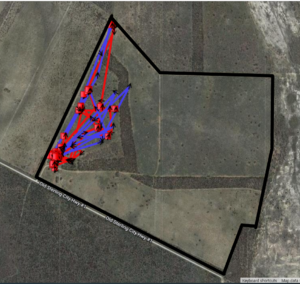
Doc’s and Thelma’s travels for a day in the invisible fence pasture at the Center. (Texas A&M AgriLife photo courtesy Costanzo 2022)
Our hope with this project is to permanently change the dogs’ behavior or at least modify their behavior to not roam as often. The batteries in the collars only last 2-3 days which is not practical for most producers. The system would be good for producers with older pups that have started to roam and need corrective training. A small trap could be set up and the dogs placed in it until they are fully mature.
Johnny and Speck One both from the Martin Ranch, had injuries again this month. We found
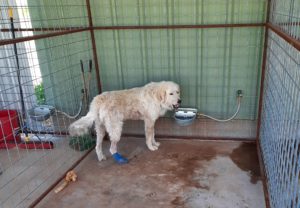
Speck One in the kennel at the Center for an injured rear paw. (Texas A&M AgriLife photo courtesy Costanzo 2022)
Johnny with a small gash on his shoulder which may have been from a feral hog again. Luckily after cleaning it up, he didn’t require stiches. Speck One developed some sort of an abscess on his right rear foot. It caused the skin to sluff off leaving his paw raw. He had to be kenneled for a couple weeks at the Center. Both dogs will be returned to the ranch in Menard after their injuries are healed.
In Closing
If you enjoyed this monthly LGD blog, please don’t forget to subscribe to it with this link The Guardian Way | Texas A&M AgriLife Research and Extension Center at San Angelo.
To provide feedback on this article or request topics for future articles, please contact me at bill.costanzo@ag.tamu.edu or 325-657-7311.
The Texas A&M AgriLife Livestock Guardian Dog Program is a cooperative effort by Texas A&M AgriLife Research and the Texas Sheep and Goat Predator Management Board. Make sure to follow us on our social media sites and share them with your friends and family!
Facebook: https://www.facebook.com/TAMUlivestockguarddog/
Instagram: @tamulivestockguarddog
YouTube: https://www.youtube.com/channel/UCF7YbP6bNDV7___6H8mifBA
Don’t forget to check out the Texas LGD Association on online! Follow the organization at https://www.facebook.com/TexasLGDAssociation or check out their website!

